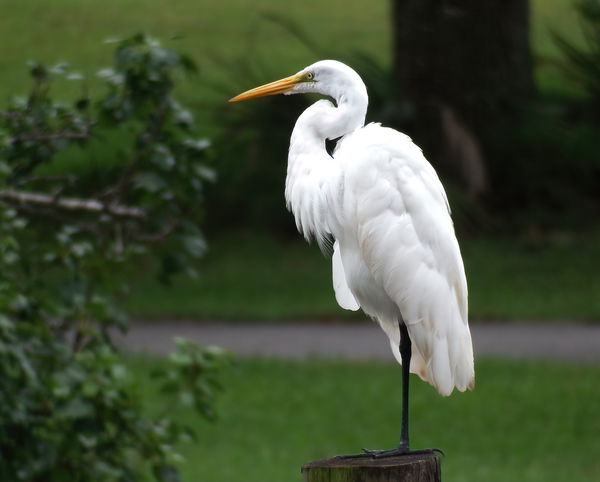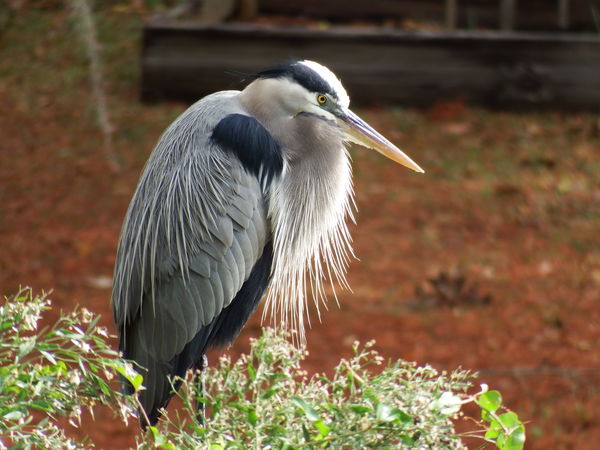Bridge Cameras
Mar 26, 2021 12:25:52 #
Timothy S wrote:
I have a professional photographer friend who is s... (show quote)
Tri-X is right on the money!
Your friend is a photographer, not a market analyst. The price of pro gear is mostly due to limited market and high R&D and marketing expenses. What you get is usually cutting edge performance and handling - something that the pros really enjoy.
On a typical HD screen - 1920x1080 or 1920x1200, a picture taken with a cellphone camera and its tiny sensor will look amazing, even compared to something out of a D850. The limiting factor is the resolution of the display - 2 mp or slightly higher. Even on a 4K display (8.8 mp), the cellphone image is going to look pretty good.
Printing will always show the strength of a full frame or larger camera, and conversely the weakness of tiny sensors.
When a client is paying for your services, it is certainly incumbent upon you to provide the best possible images. Based on how an image is going to be used, that might require anything from a cellphone camera (for photojournalism) to a medium format camera for product, industrial and fashion photography.
I use all three - a Pixel XL phone, a Sony RX10M4 (1" sensor) and a D810 full frame. There is no question that of the three, the D810 offers the best quality images especially when you need to crop and/or use it in crummy light. Can't say the same for the others.
Here are some sample images from the Sony:
https://www.flickr.com/photos/gene_lugo/albums/72157708803907866
https://www.flickr.com/photos/gene_lugo/albums/72157708793788371
https://www.flickr.com/photos/gene_lugo/albums/72157705234321622
https://www.flickr.com/photos/gene_lugo/albums/72157678751378818
https://www.flickr.com/photos/gene_lugo/albums/72157705352997741
https://www.flickr.com/photos/gene_lugo/albums/72157678751186148
https://www.flickr.com/photos/gene_lugo/albums/72157697217633732
https://www.flickr.com/photos/gene_lugo/albums/72157696606493264
https://www.flickr.com/photos/gene_lugo/albums/72157667029395028
https://www.flickr.com/photos/gene_lugo/albums/72157689083645890
https://www.flickr.com/photos/gene_lugo/albums/72157694805547345
https://www.flickr.com/photos/gene_lugo/albums/72157665487054018
https://www.flickr.com/photos/gene_lugo/albums/72157693140571925
https://www.flickr.com/photos/gene_lugo/albums/72157665486900208
https://www.flickr.com/photos/gene_lugo/albums/72157690214837382
Mar 26, 2021 12:33:26 #
Thanks. Of course I am aware of what I can find on Google search, which actually what confused me. I rely most heavily on professional reviews, and they were quite positive, with little obvious downside. I expected to find out the bad news there. I knew that I could get pretty knowledgeable advice from Ugly Hedgehog, so here I am.
Mar 26, 2021 14:14:32 #
Timothy S wrote:
Thanks. Of course I am aware of what I can find on Google search, which actually what confused me. I rely most heavily on professional reviews, and they were quite positive, with little obvious downside. I expected to find out the bad news there. I knew that I could get pretty knowledgeable advice from Ugly Hedgehog, so here I am.
Since you are aware of the "pros", perhaps you are having some difficulty with fully understanding the ramifications of the "cons"
1. The image quality is akin to compacts because of their small sensors (This doesn't mean "bad", just not as good as a DSLR with a full size sensor. Might be no concern to you if you do not make large prints.
2. Low Light and high ISO performance is compromised. (If you are shooting outdoors in bright light this will be of less concern). Panasonic was first (and only?) bridge camera to offer constant f2.8 aperture.
3. Difficult to hold the camera steady at high zoom. (Think of trying to steady hand held binoculars. You may need to use the tripod you are trying to avoid).
4. Lens is fixed and not replaceable. Will camera be able to keep up with your needs/wants?
5. There are "travel compact cameras" that are even smaller and easier to carry albeit with lesser zoom potential.
6.In general bridge cameras are not ideal for fast moving sports,
I rejected the bridge camera; and I am purely a hobbyist, because I like determining what lens to use and what settings to enter under individual circumstances. But that is me. The key is understanding what YOU want to be able to accomplish.
Mar 27, 2021 06:07:36 #
Mar 27, 2021 06:16:52 #
Longshadow wrote:
Because pros can write off their equipment?
Because pros will never use a little camera?
Because the big camera & lens is more impressive?
Because pros will never use a little camera?
Because the big camera & lens is more impressive?
Two of these statements are, for me, are a non-factor.
Can you guess which one holds true?
Mar 27, 2021 06:21:36 #
lesdmd wrote:
Since you are aware of the "pros", perha... (show quote)
Don't tar all bridge cameras with the same brush. I once owned a bridge camera -a Sony R1 - from the beginning of this century. I regretted letting it go. Absolutely Superb. 5x zoom. if you see one - buy it.
Mar 27, 2021 07:03:14 #
The Sony RX10 IV or RX10 III are considered by many to be the best available bridge camera right now. Both have a larger sensor than the FX300. Quite expensive, but can be obtained used or "open box." The image quality will be better with the Sony, but you'd have to decide for yourself if it is worth the price difference.
dpreview.com is a good place to go for reviews.
dpreview.com is a good place to go for reviews.
Mar 27, 2021 07:17:21 #
Fredrick wrote:
Could you imagine a professional wedding photographer showing up to shoot a wedding with just a small bridge camera?
People just have this notion that if it’s an important occasion, it better be shot with a big camera. While a pro could take good images with a small bridge camera, they would certainly be better with a professional setup.
People just have this notion that if it’s an important occasion, it better be shot with a big camera. While a pro could take good images with a small bridge camera, they would certainly be better with a professional setup.
There are old stories about photographers mounting their Leicas inside much larger cameras, because clients didn't want photos taken with that little toy.
Whatever works for you and me is the best camera for us.
----
Mar 27, 2021 08:12:50 #
Have a Sony a99ii. Just love this camera but I hate carrying around all the extra lenses when doing a photo shoot. With my Sony RX10MIV I do not have to carry all the extra lenses and still have wonderful photos.
Mar 27, 2021 08:13:52 #
Timothy S wrote:
Good technique and good light you can get good photos with a phone too.I have a professional photographer friend who is s... (show quote)
Mar 27, 2021 08:25:55 #
lesdmd wrote:
When your paycheck depends on producing consistent... (show quote)
well said...Also keep in mind the PROSUMER AND THE PRO are miles apart as well. So be aware what you categorize as Pro... I am a Nikon shooter, D500 (BIRDS) and D850 (LANDSCAPES) and sell my prints etc. so I have some experience and can further comment. PRO cameras are rugged, capable of taking bumps and bangs, even drops, they have sealed gaskets to support shooting events most consumers shy away from, for they are in the game on a high level. Pro cameras generally have larger sensors, more robust chip sets, wider array of lenses, lenses that are not f5.6-6.3 yet F1.2, 1.4, 2.8 f4 (even on the 400 and 600primes), higher resolution glass, not plastic, more robust shutters (most true PROS haven't adopted MIRORLESS yet (soon) Put a Nikon D6 in your hands and shoot with it then you will know the difference. Swing your body and smack the Lumi into a door jam and see what happens - the Pro camera will shrug it off....
Mar 27, 2021 09:22:24 #
Timothy S wrote:
...my question was why is it not a great option...
It can be a great option for wildlife, IF that wildlife is not moving much.
I have had great results photographing birds and gators in my yard with a Fujifilm S1 bridge camera that I bought (used/cheap) just for this purpose. It's 1200mm equivalent allows me to fill the frame much more fully than I otherwise could with one of my APS-C bodies at 300mm (my longest lens). This ability to fill the frame goes a long way to compensate for the limitions of the tiny sensor...little to no cropping. Focus aquisition is slow, though. No way would it work well with moving, or flying, wildlife. Nor is its low light performance good at all. These limitations are common with bridge cameras and others with tiny sensors.
These were taken at about 1000mm equivalent, handheld, the camera sitting on a porch railing since I didn't have the tripod handy.
Mar 27, 2021 09:37:22 #
Peterfiore wrote:
Two of these statements are, for me, are a non-factor.
Can you guess which one holds true?
Can you guess which one holds true?
Certainly......
The second.
(Nasty those little cameras.
 )
)Mar 27, 2021 09:50:57 #
The vast majority of “home” shooting comes from my Canon 5d4 or 7d2. When I bike ride, the preference is a G16 (or phone if I forget). However, when on vacation, a camera and lens can get heavy hauling it around. That’s when I turn to a Canon G1x iii and/or G3x. In 2019, we enjoyed a river cruise with that combination, while another traveler with a Nikon P900 grumbled about his camera’s weight for the entire two weeks.
Mar 27, 2021 09:56:59 #
I have 3 Canon SX models 2 60's, 1 70. Bought the 70 when one 60 started to have problems working, tried cleaning, but no good. Suspect dust in lens mechanism, something I can see easily happening. Eventually cleared up.
Don't have the one in question, but limitations of mind:
1. Can't do even short time exposures.
2. Limited ISO range.
3. Poor low light performance.
Great for plants and animals during day light, but poor for night light video of leopard eating, useless for astro.
Don't have the one in question, but limitations of mind:
1. Can't do even short time exposures.
2. Limited ISO range.
3. Poor low light performance.
Great for plants and animals during day light, but poor for night light video of leopard eating, useless for astro.
If you want to reply, then register here. Registration is free and your account is created instantly, so you can post right away.









